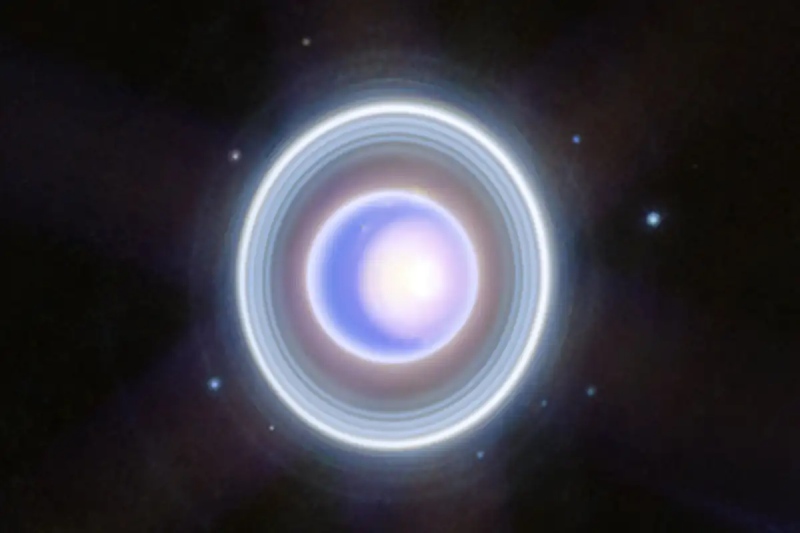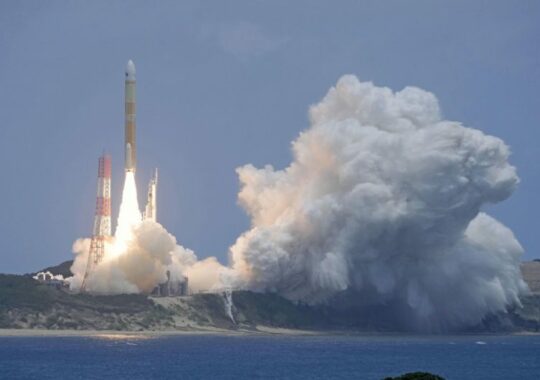The James Webb Space Telescope took this stunning image of Uranus, which shows off the ice giant planet’s fine details. The wide-field image displays background stars and galaxies, 14 of Uranus’ 27 moons, a polar ice cap, and the planet’s rings.
NASA revealed the close-up image this week, which was captured by JWST’s Near Infrared Camera and is a follow-up to a series of images taken in February. A hidden ring is visible in the updated image because to the addition of a new light wavelength. NIRCam discovered Uranus’s enigmatic “Zeta ring,” a weak, diffuse ring tucked away near the planet, despite the planet being known to have 13 distinct inner and outer rings.
14 of Uranus’ 27 moons—Oberon, Titania, Umbriel, Juliet, Perdita, Rosalind, Puck, Belinda, Desdemona, Cressida, Ariel, Miranda, Bianca, and Portia—are depicted in this picture.
Compared to the first-ever close-up of the seventh planet by humans, which was captured in 1986 by NASA’s Voyager 2 spacecraft, this image of Uranus is far more detailed. That bland image displayed a solid, featureless bluish sphere. On the other hand, JWST has seen atmospheric phenomena including a cloud cap in the north pole. Planetary scientists find this expanding and receding cap fascinating because it provides tangible proof that Uranus rotates on an axis tilted by 98 degrees, causing meteorological and seasonal impacts that result in storms.
Uranus completes one orbit of the sun in 84 Earth years. The ice giant suffers unusual seasons as a result of its sluggish orbit and extreme tilt of Uranus; the polar cap visible in the image is the result of its north polar area being in the depths of a 21-year Earth-year winter, which will end in 2028.
This wide-field photograph shows dozens of background galaxies in visible light. The majority are orange in color, but two large white spiral galaxies may be seen to Uranus’s right.
The existence of infrared aurorae surrounding Uranus was discovered by researchers at the University of Leicester in the United Kingdom in an article that was published in the journal Nature Astronomy in October.
A National Academy of Sciences Decadal Survey report from April 2022 suggested that NASA use the Uranus Orbiter and Probe Flagship project to investigate the planet’s atmosphere, clouds, and storms.





